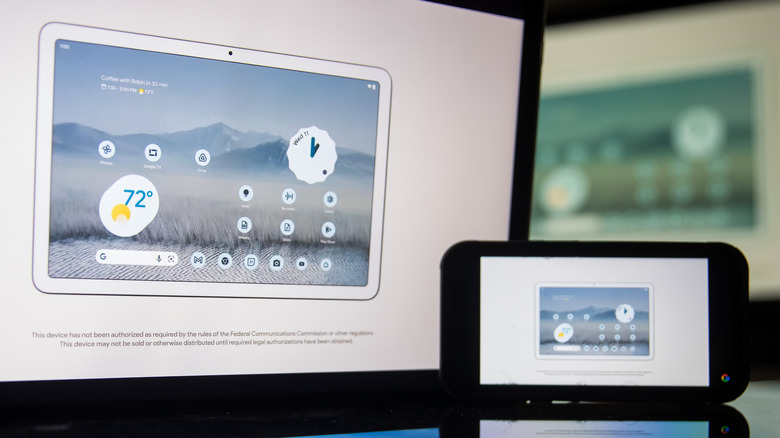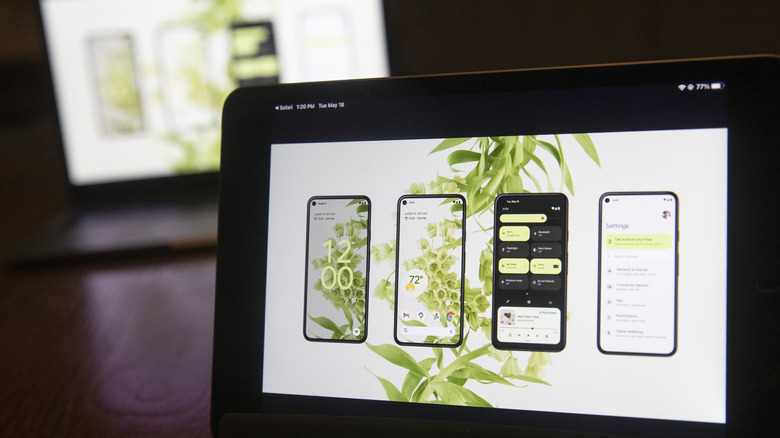Android 13 Is Betting Big On Tablets
Google revealed quite a few upcoming devices at the start of its annual I/O developers' conference. Some, like the Pixel 6a and Pixel Buds Pro, were totally expected given the company's usual cadence. It was rather surprising, however, that Google also teased not only the Pixel 7 but, more importantly, the Pixel Watch. What was completely unexpected, however, was the revelation that Google does indeed have a new tablet in the works, the first Pixel tablet in a long time. There were, of course, rumors, leaks, and even concepts of what this new "Pixel Slate" would look like, but it remains to be seen if it will live up to expectations. What's more significant, however, is the confirmation that Google is finally putting a heavy focus on tablets after years of making slates feel like second-class Android citizens.
Much like Apple, Google didn't pay tablets too much attention when they first came out. In fact, the very first hardware from the likes of Samsung was seen simply as gigantic Android phones. Samsung had to bend over backward with TouchWiz to support large displays, taking its custom UX further away from vanilla Android. It wouldn't be until Android 3.0 Honeycomb in 2011 that the platform would officially have features designed specifically for tablets. Even then, however, tablet support on Android felt raw and undercooked, even if it did offer better features than iOS — at least until iPadOS came along.
With Android 12L, Google started to lay the foundation of making Android work on a variety of screen sizes and shapes. It could no longer ignore the slow rise of foldable phones, so it had to step up and make sure that Android doesn't splinter into multiple OEM-driven versions again. Android 12L was just the opening salvo, and its availability hardly makes a dent in the Android market. With Android 13, however, Google is finally going big on big screens.
A multi-device Android world
Although the first (or second if you count the Pixel C) Pixel Tablet won't be coming until sometime in 2023, Android 13 will already pave the road for its arrival with new features that finally standardize what some Android tablet brands have already implemented on their own for years (via Google). A taskbar at the bottom, for example, will not only let you launch apps faster, but it will also let you split the screen between two apps more easily. Google also promises to improve the stylus experience on tablets, particularly palm rejection.
Of course, these features won't happen by magic, and developers will have to do some work to integrate these into their apps, especially in making sure they behave properly whether they're taking up the whole screen, half the screen, or in a resizable window like on Chrome OS. To encourage app developers, Google will be leading the charge and will update 20 of its first-party Android apps to take advantage of Android 13's tablet-friendly features. Popular social media apps like TikTok and Facebook will also be following suit to lead by example.
Although Google is finally making tablets first-class citizens, it's really just a stepping stone in its grander vision. It wants to prepare users and, more importantly, developers for a multi-device world where Android will be everywhere, from phones to tablets to watches to almost anything that can run the operating system, including smart appliances. At the moment, however, the platform is still stuck on a phone-only mindset, and it's about time that it starts growing out of its shell, starting with tablets and the foldables and rollables of the near future.

